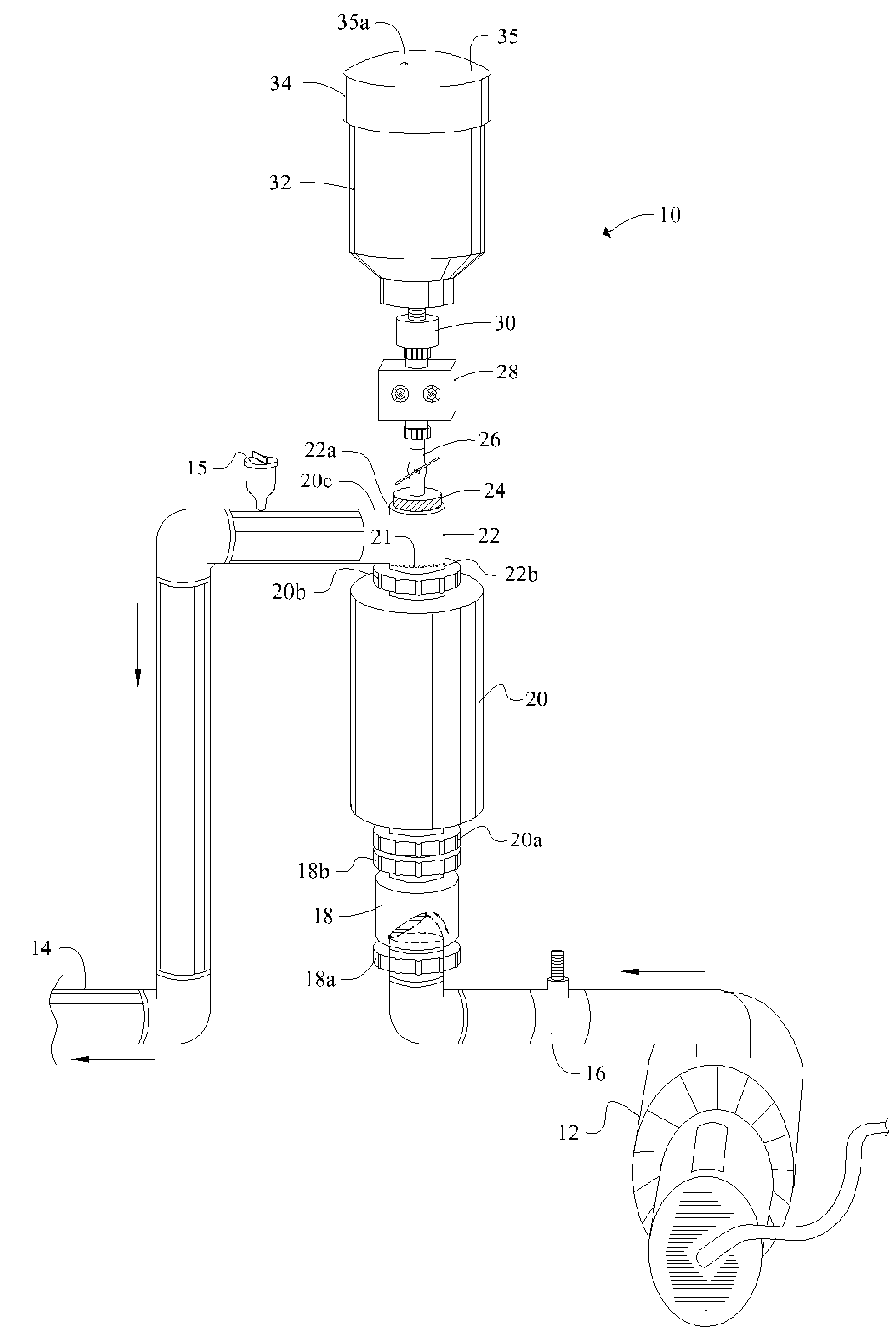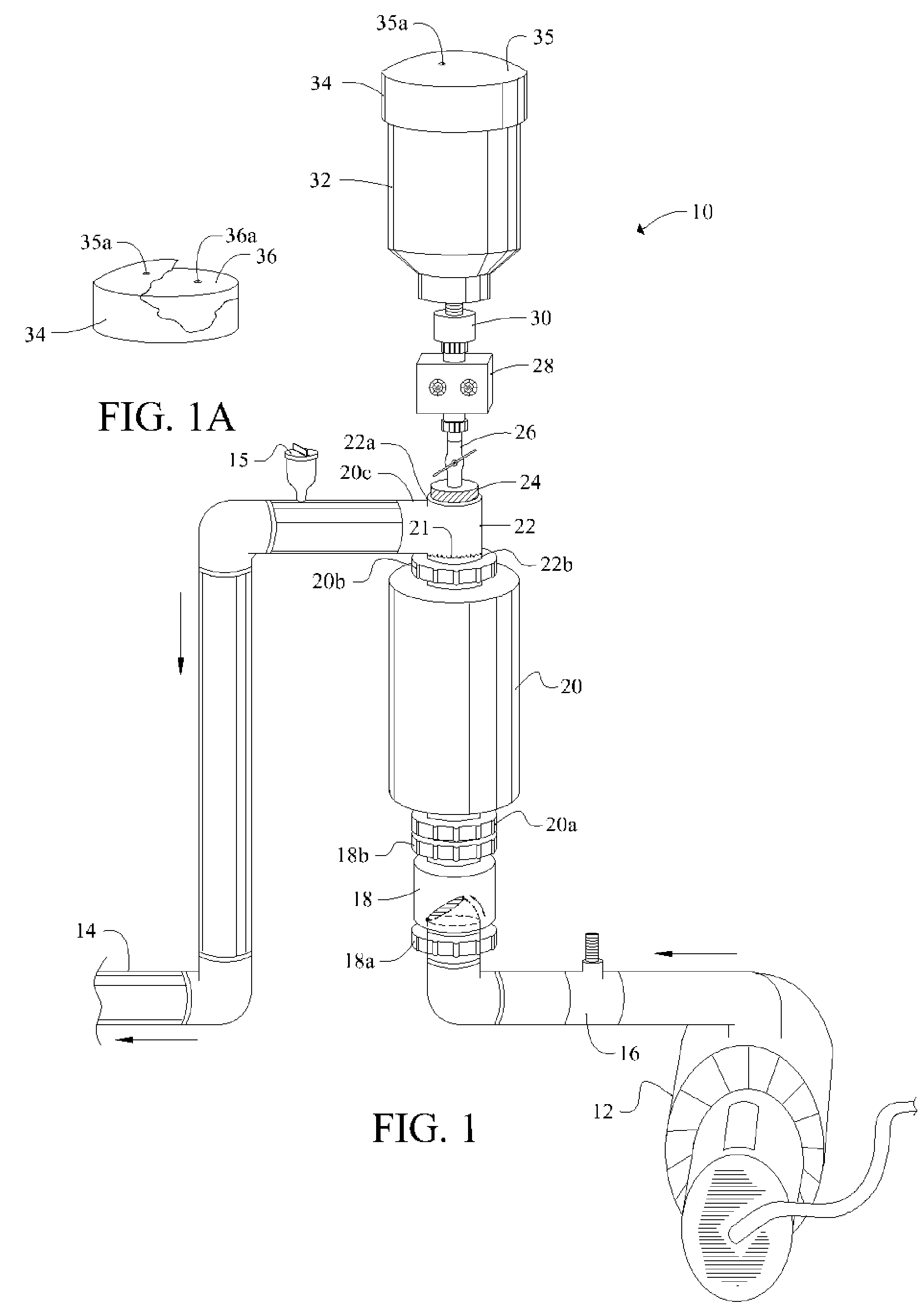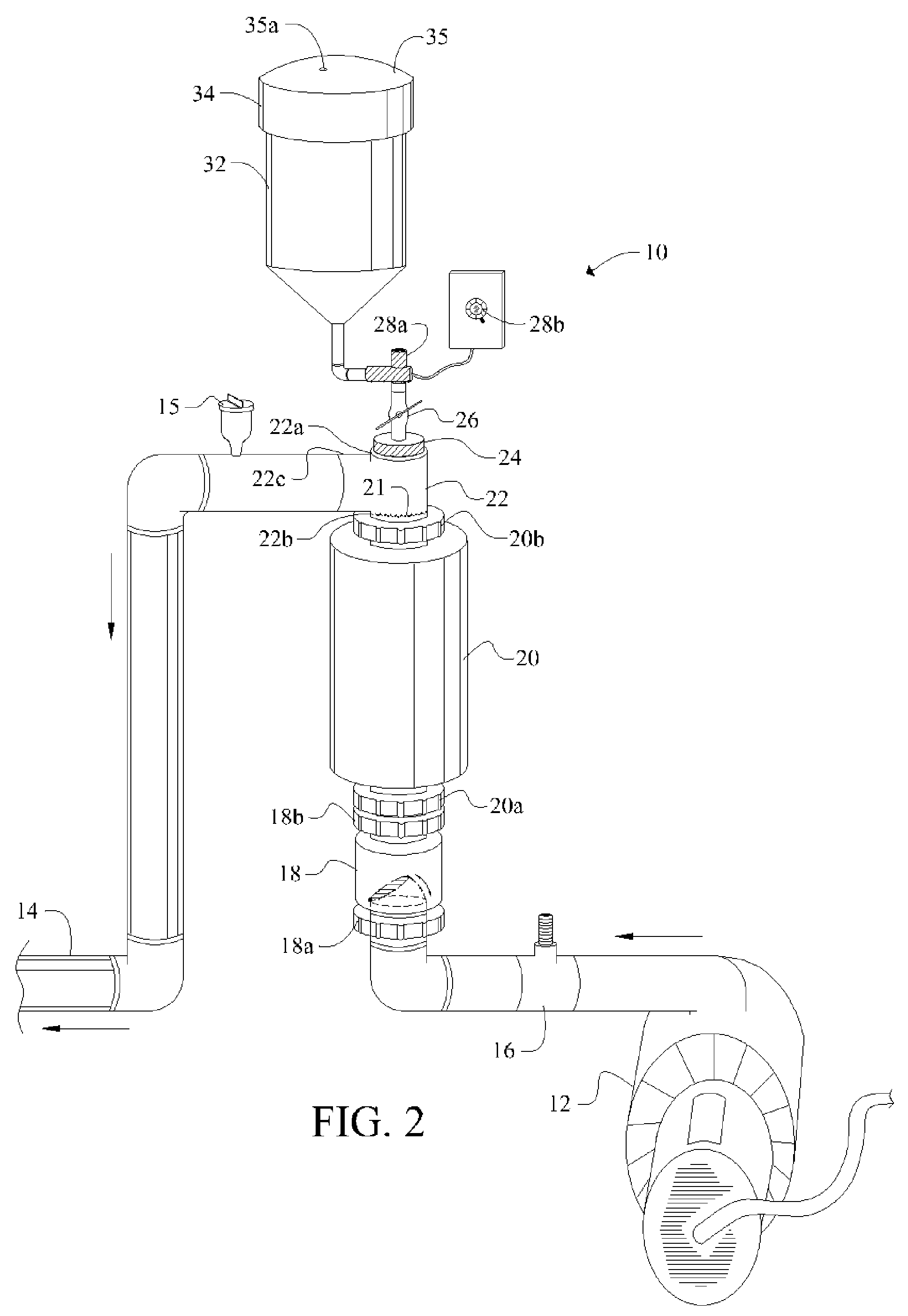Self-cleaning chlorine generator with pH control
a chlorine generator and self-cleaning technology, applied in the field of electrolytic chlorine generators, can solve the problems of severe burns, adversely affecting the water quality and the effectiveness of the chlorine generated by the generator, and the electrolytic cells that generate the chlorine are subject to degradation, so as to reduce the ph level, reduce the ph of the water, and reduce the volume of water within the electrolytic chamber
- Summary
- Abstract
- Description
- Claims
- Application Information
AI Technical Summary
Benefits of technology
Problems solved by technology
Method used
Image
Examples
Embodiment Construction
[0048]Referring now to FIG. 1, it will there be seen that an illustrative embodiment of the invention is denoted as a whole by the reference numeral 10.
[0049]Novel chlorine generator and plate-cleaning assembly 10 is positioned in line between a circulation pump 12 and return line 14.
[0050]Circulation pump 12 draws water from a swimming pool, spa, fountain, well, or other main body of water, not shown, and pumps said water through flow switch 16, one-way check valve 18, electrolytic chamber 20, T-shaped conduit 22, and outlet 14. Electrolytic chamber 20 is vertically oriented.
[0051]Cap 24 screw-threadedly engages uppermost branch 22a of T-shaped conduit 22 and is adapted to screw-threadedly receive ball valve 26. Infusion means 28 surmounts said ball valve 26. Container or reservoir 32 surmounts said infusion means 28. Removable cap 34 provides a closure means for container 32.
[0052]Positioning reservoir 32 above electrolytic chamber 20 as depicted enables a pH-reducing agent in sai...
PUM
| Property | Measurement | Unit |
|---|---|---|
| pH | aaaaa | aaaaa |
| time | aaaaa | aaaaa |
| period of time | aaaaa | aaaaa |
Abstract
Description
Claims
Application Information
 Login to View More
Login to View More - R&D
- Intellectual Property
- Life Sciences
- Materials
- Tech Scout
- Unparalleled Data Quality
- Higher Quality Content
- 60% Fewer Hallucinations
Browse by: Latest US Patents, China's latest patents, Technical Efficacy Thesaurus, Application Domain, Technology Topic, Popular Technical Reports.
© 2025 PatSnap. All rights reserved.Legal|Privacy policy|Modern Slavery Act Transparency Statement|Sitemap|About US| Contact US: help@patsnap.com



